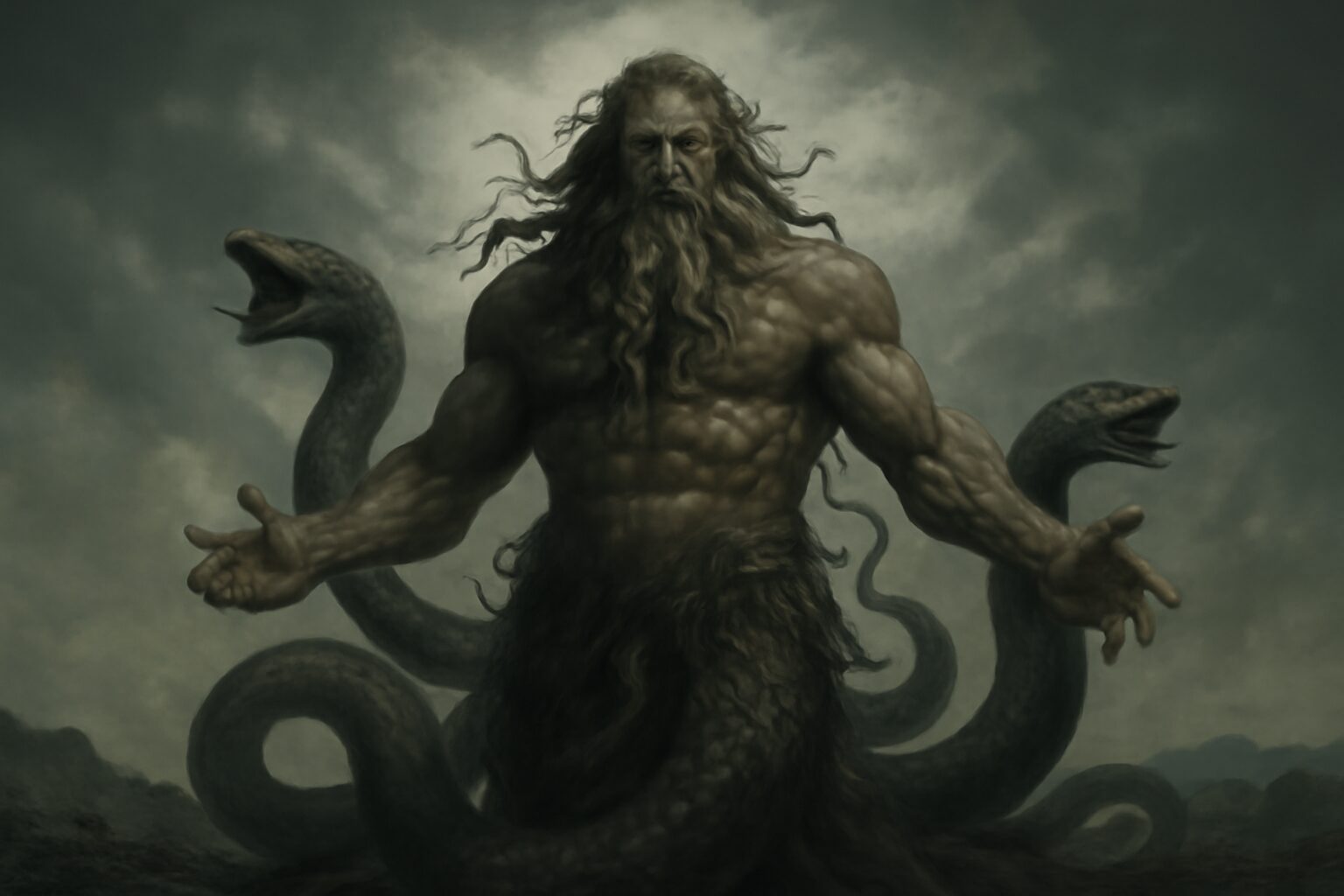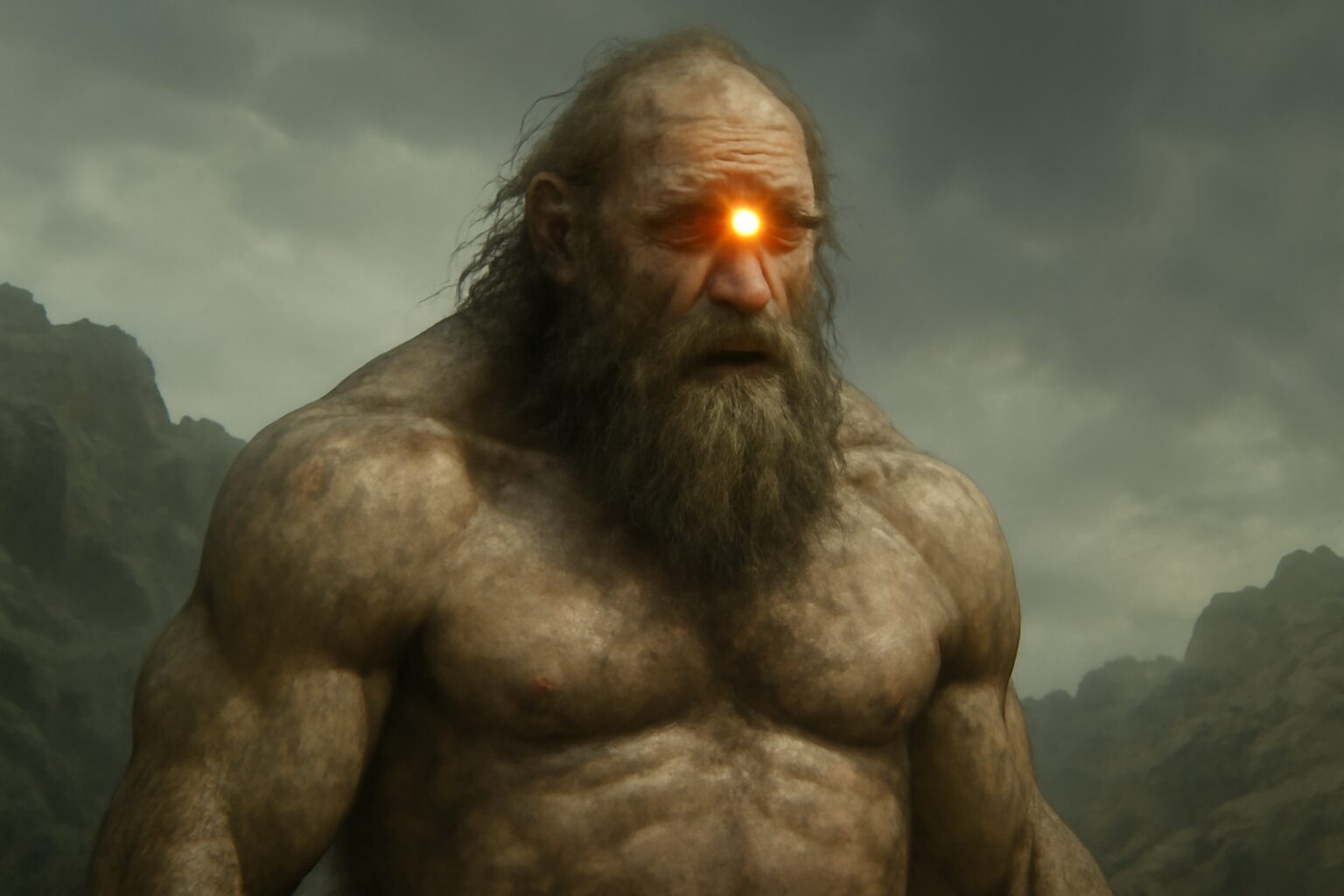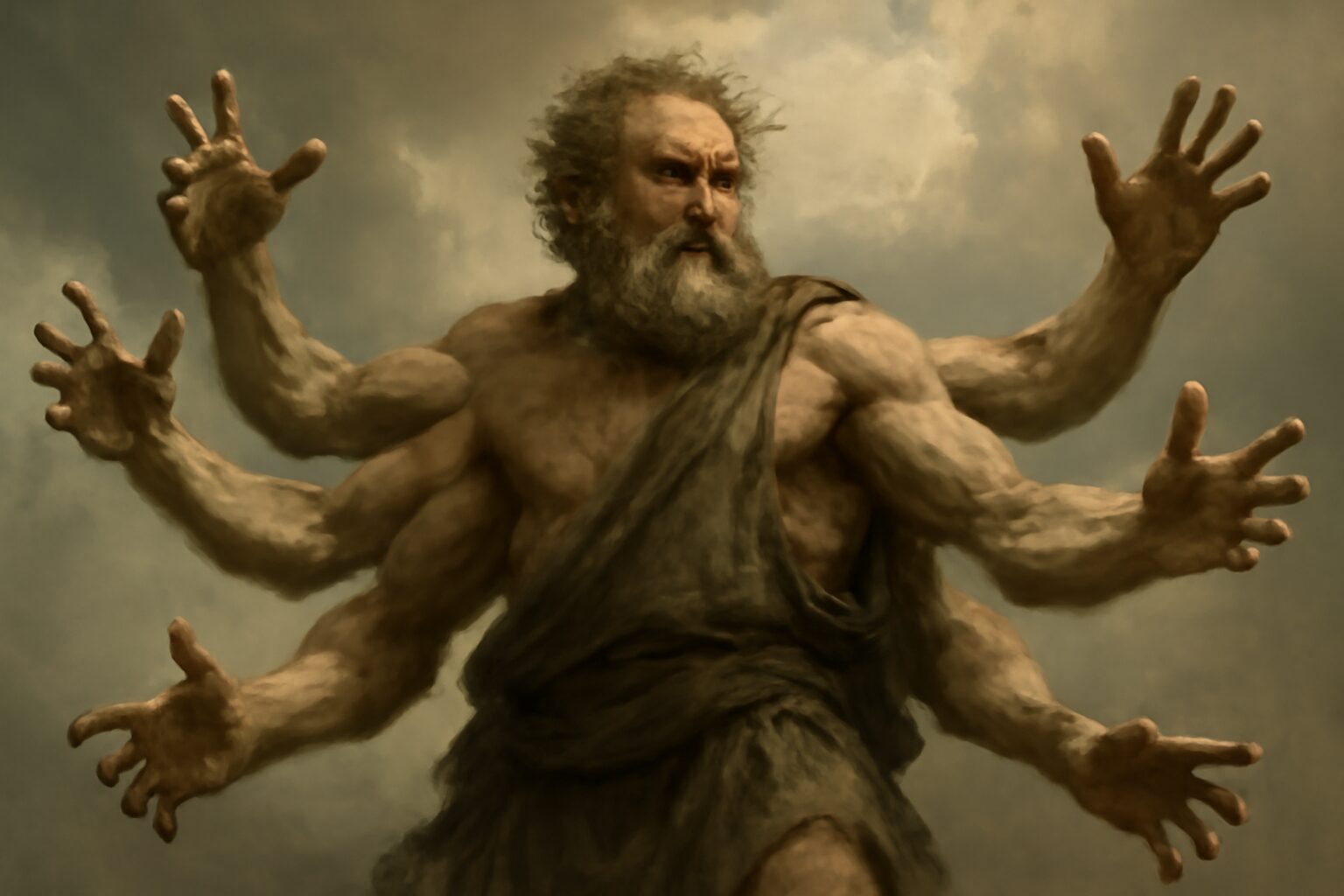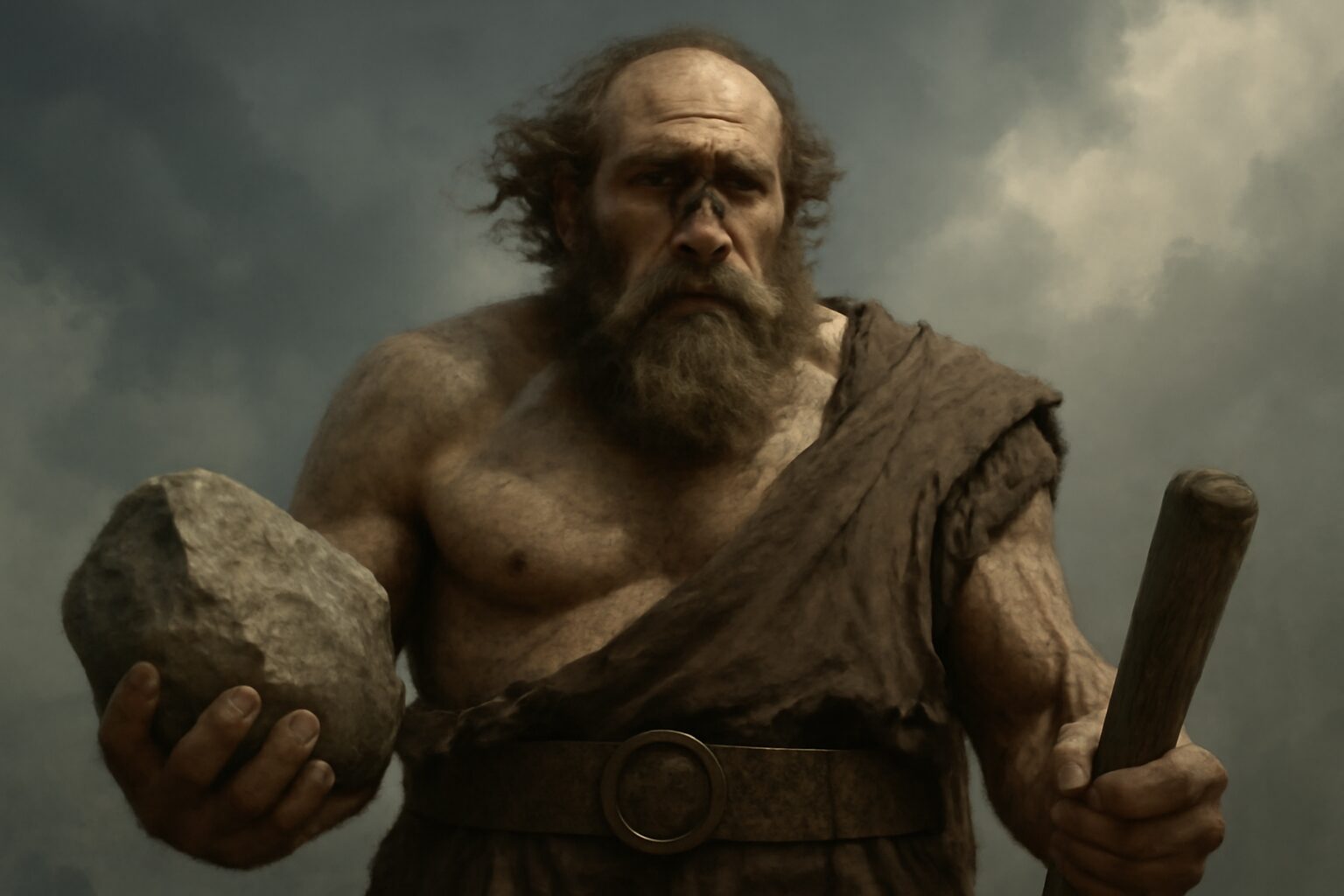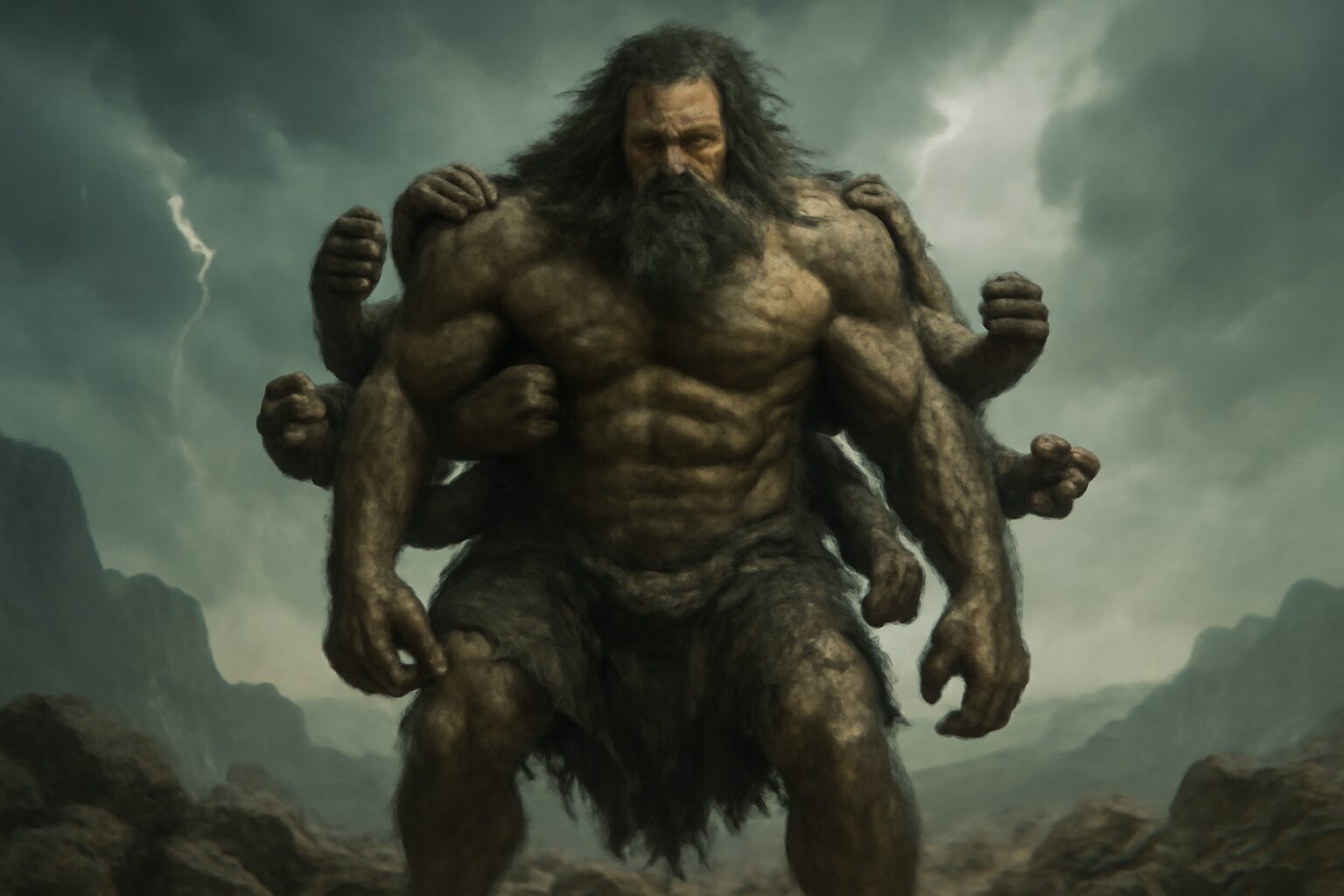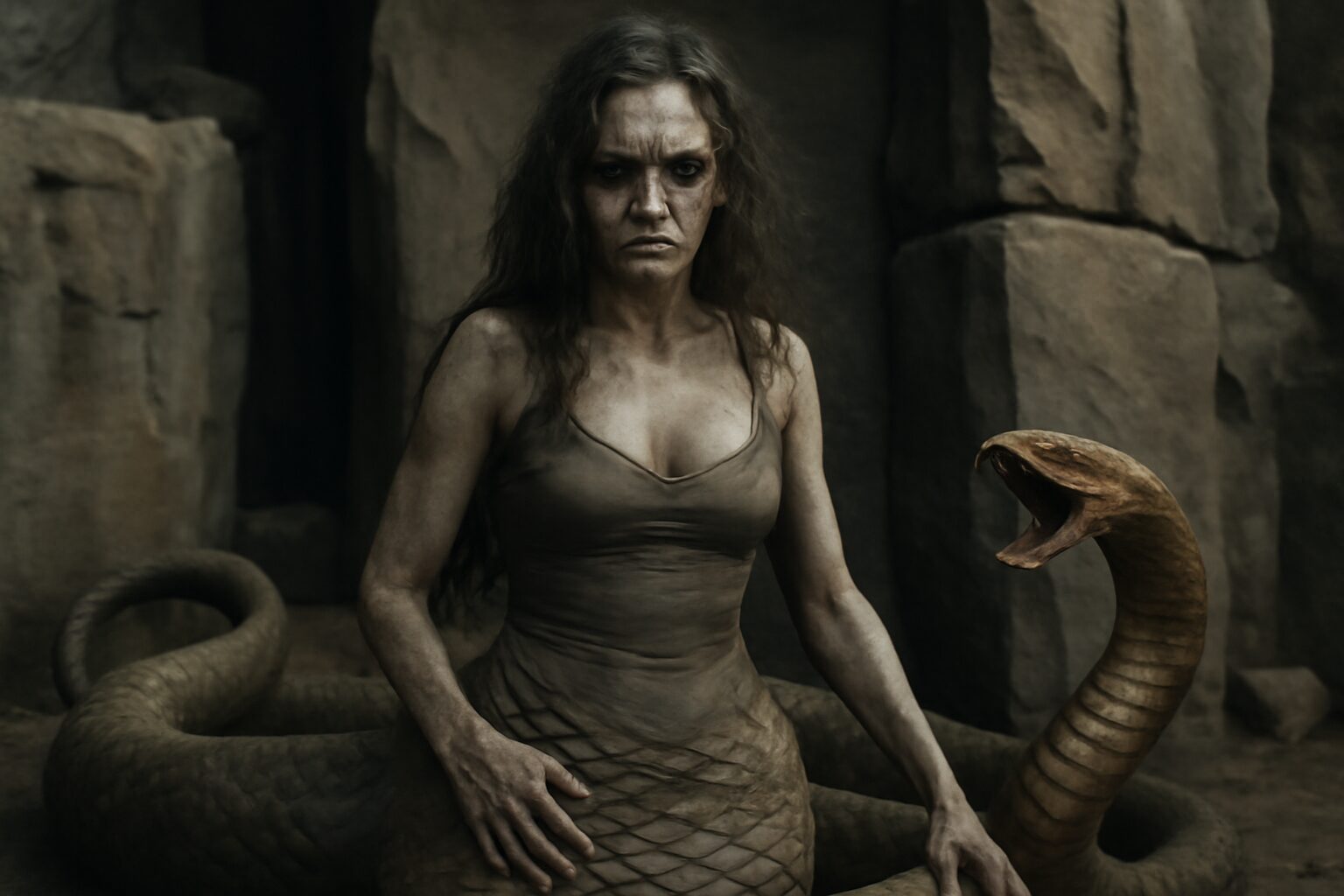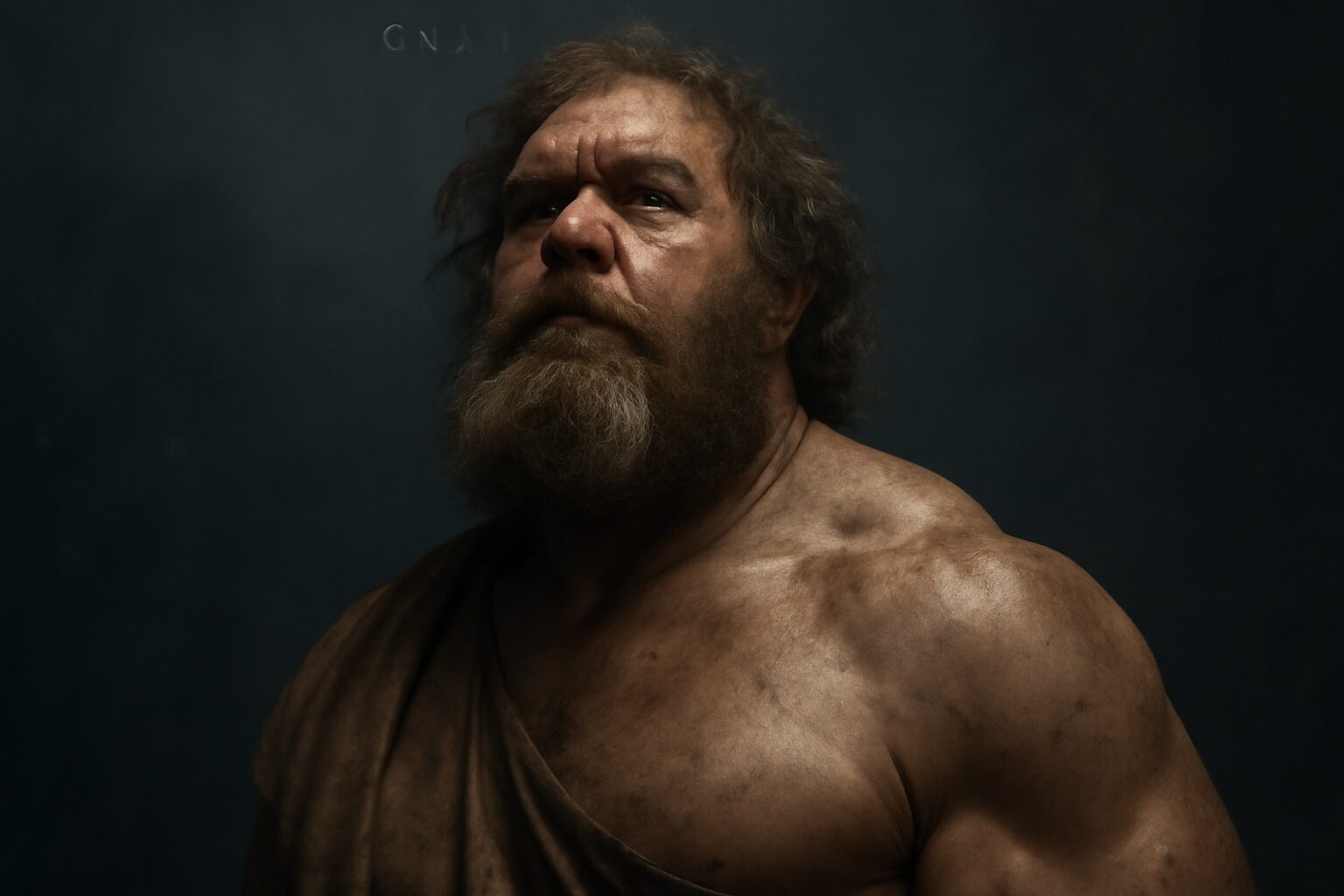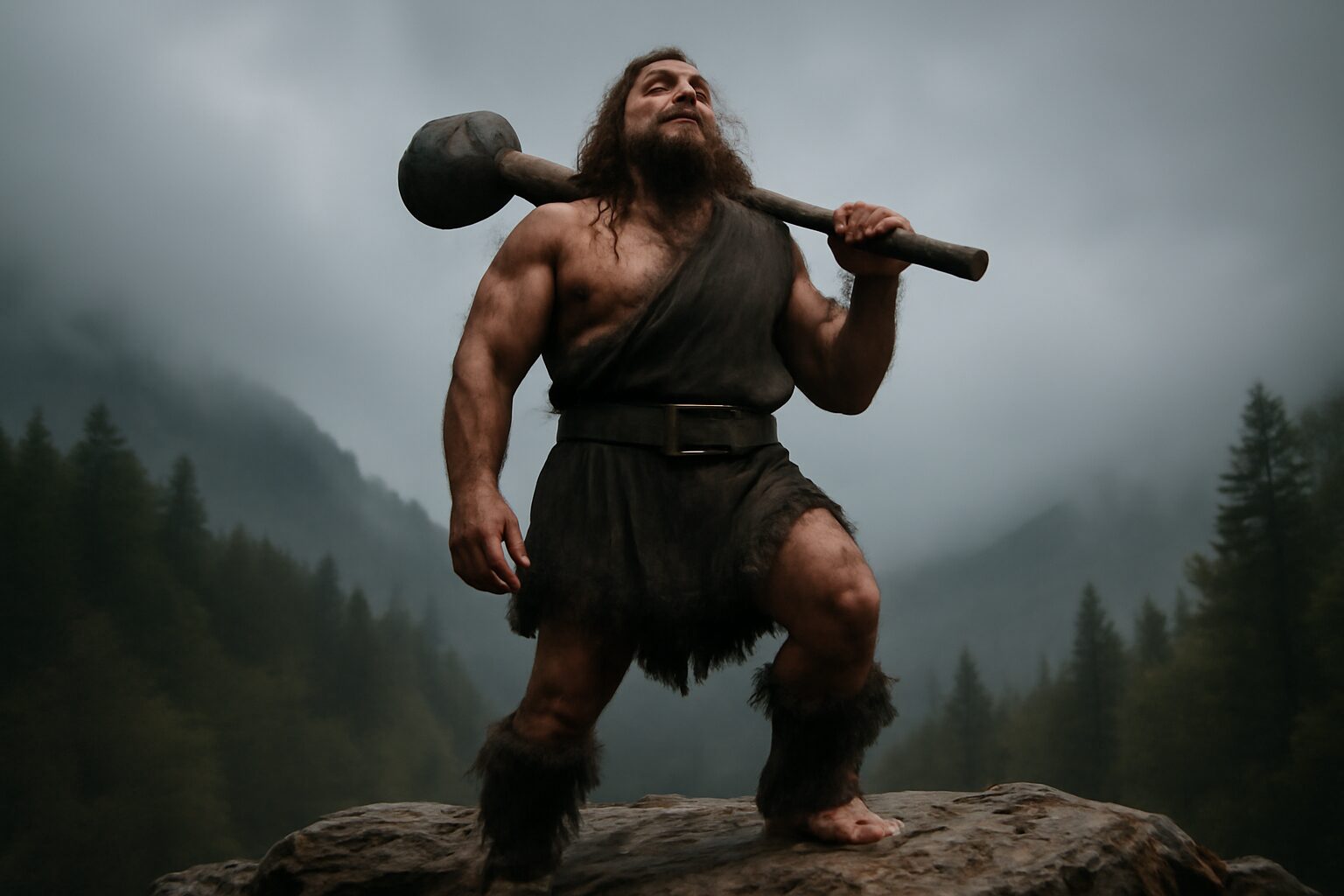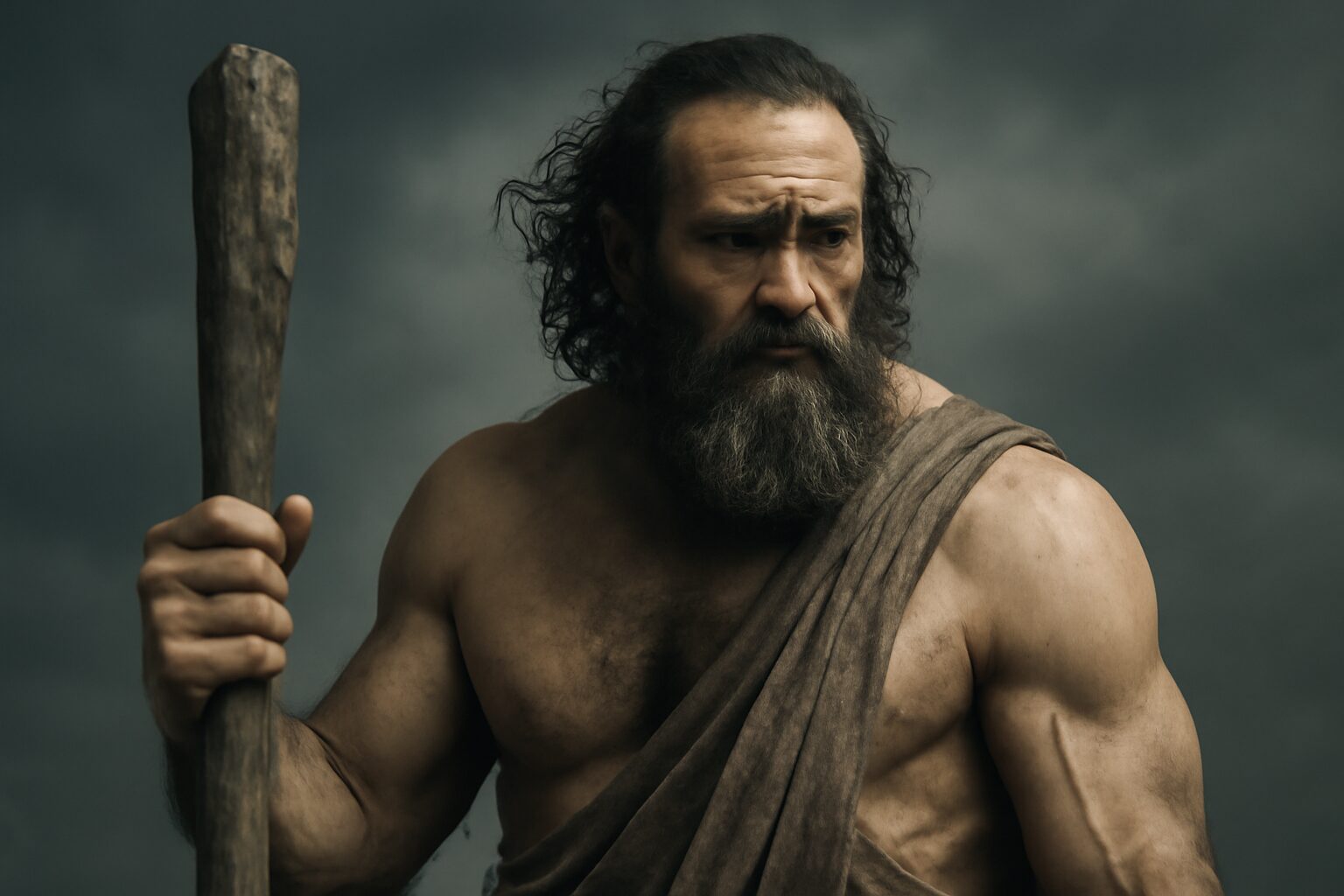Typhon: The Deadliest Monster of Greek Mythology
In Greek mythology, Typhon (also called Typhoeus) was the most fearsome and powerful monster ever born. Known as the "Father of All Monsters," he was a colossal, fire-breathing creature with a hundred dragon heads, serpentine legs, and a voice that could shake the earth. His very name struck terror into the hearts of gods and mortals alike.
The Birth of Chaos
Typhon was born from the union of Gaia (Earth) and Tartarus (the Abyss), making him a primordial force of destruction. Some myths suggest he was created as Gaia's revenge after the Olympians defeated the Titans. His arrival marked a direct challenge to Zeus's rule, as Typhon sought to overthrow the gods and plunge the world into chaos.
The Battle with Zeus
The most famous myth about Typhon recounts his epic battle with Zeus. When Typhon attacked Olympus, the gods fled in terror—transforming into animals to escape. Only Zeus stood his ground, wielding his mighty thunderbolts. After a cataclysmic fight that scorched the earth and darkened the skies, Zeus finally defeated Typhon by burying him beneath Mount Etna, where his fiery breath still fuels the volcano's eruptions.
Typhon's Legacy
Typhon's significance extends beyond his monstrous appearance. He was the progenitor of many famous creatures, including:
- Cerberus - The three-headed guard dog of the Underworld
- The Chimera - The fire-breathing lion-goat-serpent hybrid
- The Sphinx - The deadly riddler of Thebes
- The Hydra - The many-headed serpent slain by Heracles
His myth represents the eternal struggle between order (the Olympians) and chaos (primordial forces). The Greeks saw Typhon's imprisonment under Etna as an explanation for volcanic activity and earthquakes—nature's way of reminding mortals of the gods' power.
Typhon in Culture
The word "typhoon" derives from Typhon's name, linking his destructive nature to violent storms. He appears in various ancient texts, including Hesiod's Theogony, where his battle with Zeus is dramatically recounted. Even today, Typhon remains one of mythology's most terrifying figures—a symbol of nature's uncontrollable fury.
Alternative Names for Typhon
God Name: Typhoeus (Roman)
An alternative name for Typhon in Roman mythology, often used interchangeably. It retains the Greek root but is adapted into Latin form.
God Name: Typhaon (Greek)
A variant of Typhon's name found in some Greek texts, possibly reflecting regional or dialectal differences in pronunciation or spelling.
God Name: Typhos (Greek)
Another Greek variant of Typhon's name, sometimes used in poetic or literary contexts to refer to the monstrous deity.
God Name: Typhonomachy (Roman)
A term derived from the battle between Typhon and Zeus (Jupiter in Roman mythology), sometimes used to refer to Typhon himself in a broader mythological context.
Tales about Typhon
Typhon and Zeus: The Clash of Titans
When Typhon, the deadliest monster born of Gaia and Tartarus, rose to challenge the gods, Zeus stood as the last line of defense. With a hundred dragon heads breathing fire and a voice that mimicked every beast, Typhon tore up mountains and hurled them at the heavens. The other Olympians fled in terror, but Zeus wielded his mighty thunderbolts with fierce determination.
The Battle and Its Aftermath
Their clash shook the cosmos. Zeus’s lightning scorched Typhon’s monstrous forms, while Typhon’s coils constricted the king of gods, temporarily stealing his sinews. With the help of Hermes and Pan, Zeus recovered and ultimately overwhelmed Typhon, burying him beneath Mount Etna, where the monster’s fiery breath still fuels the volcano’s eruptions.
Typhon and Echidna: A Monstrous Union
After his defeat, Typhon found companionship with Echidna, the half-woman, half-serpent "Mother of All Monsters." Their union produced some of mythology’s most fearsome creatures, including Cerberus, the multi-headed hound of Hades; the Scylla, who terrorized sailors; the Charybdis, a deadly whirlpool; and the Nemean Lion, among others.
A Legacy of Terror
Though imprisoned, Typhon’s influence lived on through his offspring, who became central figures in the heroic quests of demigods like Heracles. This monstrous lineage ensured that Typhon’s threat to order and civilization persisted, challenging heroes and gods alike for generations.
Frequently Asked Questions
Who is Typhon in Greek mythology?
Typhon is one of the most feared and powerful monsters in Greek mythology, often called the 'Father of All Monsters.' He was a giant with serpentine features and was known for his battles against Zeus, the king of the gods.
What are the Gigantes (Giants) in Greek mythology?
The Gigantes, or Giants, were a race of enormous and fierce beings born from Gaia (Earth) and the blood of Uranus. They famously fought the gods in the Gigantomachy, a great battle for control of the cosmos.
Why are Typhon and the Gigantes important in Greek myths?
Typhon and the Gigantes represent chaos and rebellion against the order of the Olympian gods. Their stories highlight the struggles of the gods to maintain power and the eternal conflict between order and chaos in mythology.
What can we learn from the myths of Typhon and the Giants?
These myths teach us about the ancient Greeks' views on power, nature, and the unknown. They symbolize the challenges even gods face and the importance of resilience, as seen in Zeus's victories over these monstrous figures.
How do Typhon and the Gigantes relate to modern storytelling?
Typhon and the Gigantes inspire modern tales of epic battles between good and evil, heroes and monsters. Their themes of overcoming overwhelming odds resonate in today's fantasy literature, movies, and games.

